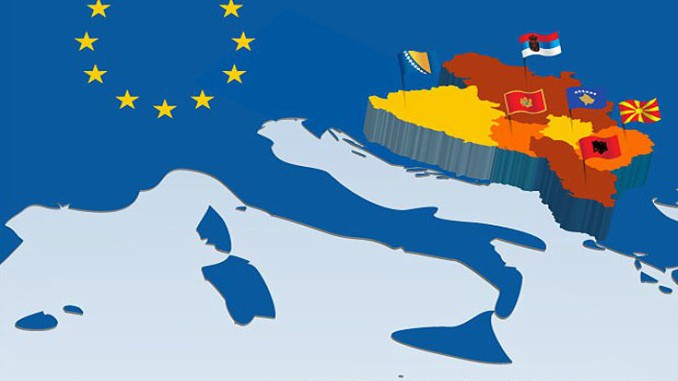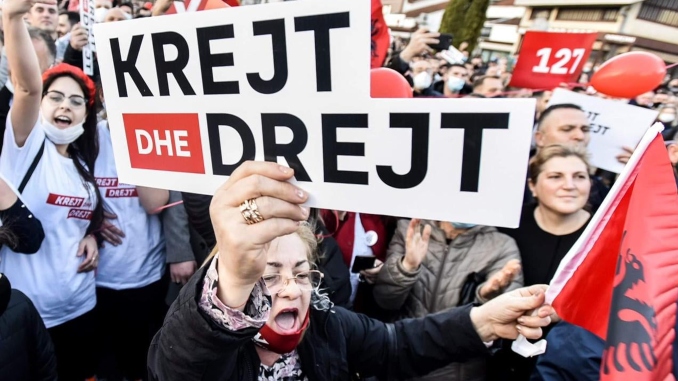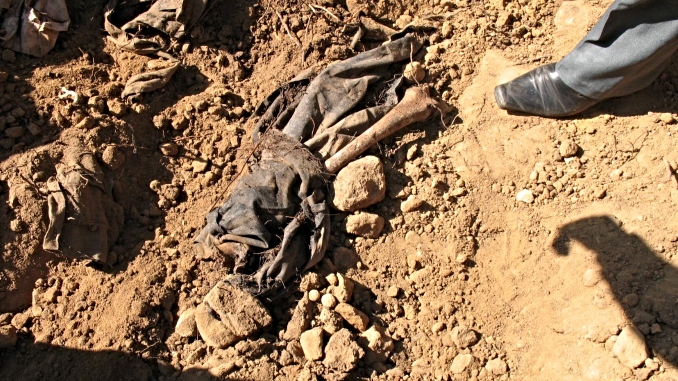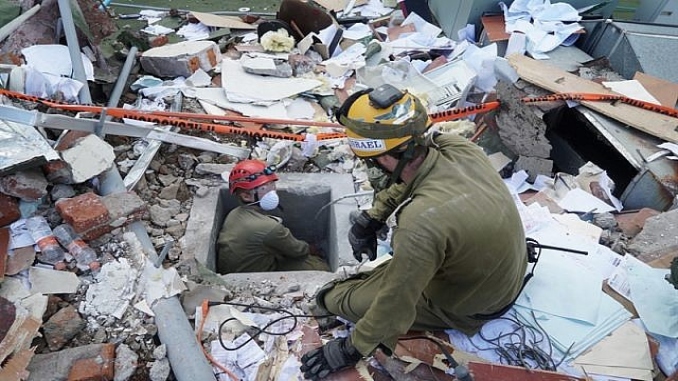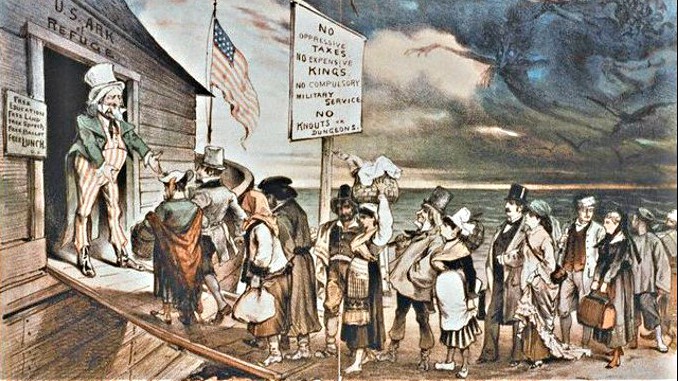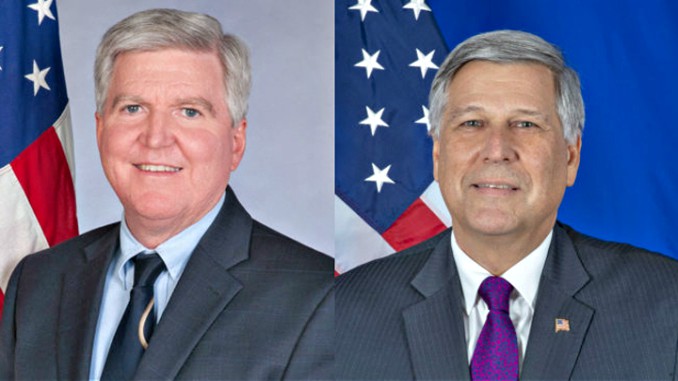What the hell is going on in Macedonia?- by DAVID STEFANOSKI
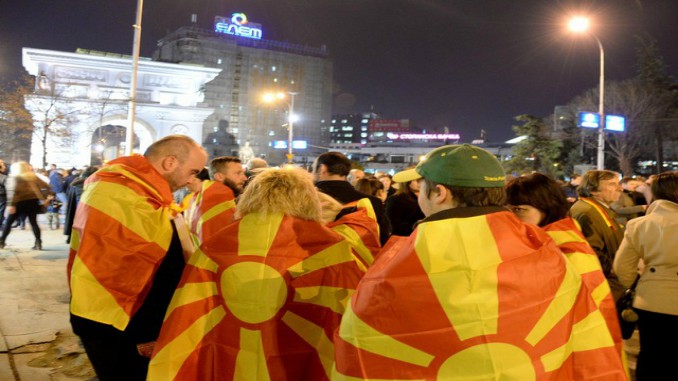
A maelstrom of scandals, drama, violence and anger has seen Macedonia sliding towards collapse in recent months, with serious implications for the Balkans as a whole.
The past few years have been increasingly turbulent for the Republic of Macedonia. The country has been stuck in a deep crisis since 2014, with the rare glimmers of hope being quickly extinguished, and few people in the country seeing a future for themselves at home. So how did we get here?
Macedonia has been ruled by the conservative Macedonian VMRO-DPMNE party and their coalition partner, the self-proclaimed “Marxist-Leninist” Albanian party, DUI, since 2006. Although DUI has nothing to do with the Marxist-Leninist ideology, their partners do employ some conservative thought into creating a new faux culture and identity for the Macedonians. This new identity is mostly based on nationalism, inclusing the revival of lesser known and lesser revered figures from the past such as Andon Kjoseto, a hitman that lived through the anti-Ottoman rebellion.
This self-stylized reinvention of the national identity has been the bane of many critics for its crudeness and for being based on “alternative facts”, however it had a financial drawback as well – the government began an initiative to reinvent the national identity, which included a project called “Skopje 2014”, among other things. This initiative has cost hundreds of millions of dollars – some estimates even going as far as 700 million – and it has delivered in a big way, putting up hundreds of monuments, mostly in the centre of the capital, Skopje, but also in other cities around the country.
This nationalistic wave was dulled by the protest movements that started to appear in the fall of 2014. First, as usual, came the students, then the teachers, professors, high school students, part-time workers and pretty much everyone else that had a bone to pick with the uncontrolled “reforms” the government was making. All of these new movements used antinationalist rhetoric, and some of them (Student’s plenum) even negotiated the government into submission after a two week long occupation of the universities. Thus, the cracks in the rock-solid power of VMRO-DPMNE and DUI began to form.
Following the students, the main opposition party, the SDSM started publishing audio recordings of wiretapped officials. It was a huge scandal, revealing that the national intelligence agency had wiretapped the entire government, opposition, media, all political figures, foreign diplomats and embassies, as well as thousands of other people. It is still unclear who ordered this to be done, and where the recordings would go, but somehow they came into the hands of Zoran Zaev, leader of the SDSM.
He published them one by one from his party headquarters until 5 May 2015, when a recording of the then-head of the ministry of interior and her spokesperson talking disparagingly about a boy being killed at the victory celebrations after the elections was released.
The recording sparked a public revolt that had been lacking for years, where a few thousand people, unorganized and unprepared, tried to storm the government building. After a few hours and a few dozen injured, riot police dispersed the crowd. Four days later, the police engaged in a firefight with a terrorist group in the second largest city, Kumanovo, and eight police officers died. This sparked a period of mourning and the protests were either transformed or called off.
In the following months, the four major political parties at that time, the VMRO-DPMNE, SDSM, DUI and DPA signed the Przhino agreement, implementing a special public prosecutor to investigate the crimes implicated in the audio recordings. The SPP has brought up dozens of new cases over the following months, and while no sentences have been brought yet, the prosecution is working on several cases against high government officials and businessmen.
According to the big picture presented in opposition media, Macedonia has been ruled by a criminal elite instead of a political party and it is hard to not see the evidence, especially after you’ve literally heard it on leaked recordings. Meanwhile in 2016, a protest movement called the “Colourful revolution”, spearheaded by the SDSM alongside dozens of NGO’s and initiatives raged on for over two months, gathering tens of thousands of supporters.
The cause for this was the general decree that the President of the Republic, Gjorgje Ivanov proclaimed in April, giving amnesty to any and all politicians in Macedonia from the cases initiated by the special prosecution. After a while, the President withdrew his amnesty and the protests settled down.
The next big thing that happened were the parliamentary elections in December 2016, where the ruling VMRO-DPMNE fell to 51 MPs, and the SDSM rose to 49, while the main Albanian parties DUI and DPA both lost MPs to the new Albanian parties Besa and the Albanian Alliance coalition.
After a lot of pressure from all sides and the obvious fact that VMRO-DPMNE could not assemble a majority to form a government, the SDSM provided proof to the public and the President who had asked for it, that it had formed a parliamentary majority of 67 out of the 120 seats.
SDSM had assembled this majority with the signatures of the representatives from DUI, who turned on their coalition partner, and the new Albanian parties. A small, but important detail here is that a new far-right movement called Tvrdokorni (a name meaning something between “hardcore” and “hardliners”) sprung up and marched through the capital, condemning both SDSM and VMRO-DPMNE as traitors to the national Macedonian interests.
Amazingly, the President refused to give a mandate to the opposition leader Zoran Zaev saying that, through his coalition with the ethnic Albanian parties, he was following the agenda of neighbouring Albania and thus threatened the territorial integrity of Macedonia. Meanwhile, an initiative supported by VMRO-DPMNE appeared, mimicking the methods of the Colourful revolution in its entirety, protesting in over 20 cities and with thousands of people.
The only difference between the Colourful revolution and the so-called “Black revolution” is that the latter stands for Macedonian national pride, against foreign influences and Albanian domination, while the Colourful revolution stood for multi-nationalism and rule of law. Both protest movements encapsulate some degree of violence – the Colourful revolution practiced soft violence, throwing water balloons filled with all kinds of colors on government symbols and buildings, while the new movement has started by attacking prominent opposition politicians, supporters and media. This is where we are today.
However, over the last period, things started to get a bit blurry. The main subject in the media is no longer the crime that had sparked this whole crisis, or the wiretapping scandal. Now, the media is concentrated on nationalism and the erosion of the state.
This is because of the latest developments in the political situation, where all of the ethnic Albanian parties went to Tirana and created an Albanian political platform that seeks to implement bilingualism in Macedonia, making Albanian the second official state language.
The VMRO-DPMNE responded harshly to this platform, but DUI officials repeatedly stated that in negotiations for the new government between the current coalition in power, the ruling Macedonian party accepted all of the terms except for the continued existence of the special public prosecution.
Thus, nationalism from both sides soars after years of silence. One as a veiled irredentist political statement and the other as a self-proclaimed defender of the unitary character of the state, while at the same time being against the opposition and a supporter of the current parties in power.
Although the situation is incredibly convoluted, there are still positive sides. One of these is in regards to the failure in the rise of the far-right. VMRO-DPMNE, with its infinite wisdom, has sidestepped their only chance at reforming their party into one that would become more powerful, by subduing the Tvrdokorni movement and replacing it with a Colourful Revolution-type one.
The Tvrdokorni gathered a decent number of supporters in a relatively short period of time, partisan and non-partisan nationalists alike. Through this far-right movement that shares its ideology with the ruling Macedonian party, DPMNE could have reformed into a much stronger and more concentrated force based on ideology instead of the loose technocracy and organized crime base which it has become. On the other hand, the SDSM’s peaceful and reformist ways of non-violence have brought it within grasp of coming to power after 11 years in opposition.
After all that, we have to pose the question “What effect will this have on the situation in the country and the region?”
First, we have to take into consideration the cultural standpoints. Macedonia has two major ethnic groups – the Macedonians and the Albanians, but only the Albanian political parties are connected with their peers in Albania and Kosovo. This necessarily implies support from those states and therefore interference in domestic affairs, however it also necessitates caution as all of these parties are very close.
President Ivanov in his address to the nation, declared that Albania had meddled in the country’s domestic affairs. He received a response from Albanian Prime Minister Edi Rama which denied this, however the diplomatic incident stands. Macedonia has been plagued by diplomatic incidents as the VMRO-DPMNE leader, Nikola Gruevski called for the removal of foreign-funded organizations and nosy ambassadors, referring mainly to US Ambassador Jess Baily who has had frequent talks with all party leaders.
Furthermore, Ivanov mentioned in a subsequent statement that the army of the Republic of Macedonia is ready to defend its borders should need arise, prompting responses from neighboring nations. Newspaper articles fly about, stating that Kosovar forces are on the border, that terrorists are forming in Macedonia and so on, aggravating the situation even further.
Statements were made by NATO and EU high representatives to calm the situation down and ask Ivanov to give the mandate to Zaev per democratic principle, but the situation still remains unclear. Thus, even though Macedonia is at the centre of the clash of power and cultural differences between its indigenous people, as well as the struggle between globalist, pro-western cultural influences and the local traditions, I would say that the attempts of the ruling party to turn Macedonia’s situation from a “state under occupation by a criminal group” into one of ethnic conflict, have been relatively unsuccessful.
What is clear though is the support that the Russian government is giving to the current party in power, saying that VMRO-DPMNE is fighting irredentism and foreign influences, instead of the obvious struggle to stay out of prison for the billions of dollars extracted from the state treasury through various means over the last 11 years. Zaev has repeatedly said that all criminals from all parties, including SDSM but primarily VMRO-DPMNE must answer for any crimes they have committed, and that everything can be debated if it is within the constitution.
With the Russian influence and the American domineering position coupled with the EU’s (uncertain at times) support for the rule of law and democracy, the country is well on its way to change. We can expect a new government soon, as President Ivanov has no power to keep the country in chaos by withholding the democratic mandate from the parliamentary majority. Sooner or later, he will have to reverse his decision because the country is already falling apart – the government is currently not doing anything, instead choosing to hibernate until disbanded, the parliament has not assembled for two and a half months and the judiciary is experiencing major shake-ups and resignations as SPP cases start to flow in.
Even more troubling is the postponing of local elections that were supposed to take place in May, but were not called for by any party within the legal time limits. No local government means no paychecks for those employed by it, and these are the thousands of people that will starve should this come to pass.
So very soon, if nothing changes, Macedonia could have no executive body, no legislative body, weak judiciary bodies and illegitimate and powerless local authorities. It is very unclear what would come from the midst of the chaos, but with the current flow of events, it can’t possibly be good.
Will it be a nationalist resurgence in far right parties, or a major left uprising through the newly formed leftist party? Will it be an inter-ethnic or an intra-ethnic conflict being perpetuated by the media? Will the rumors of a nationalist Macedonian paramilitary group come true, or will Macedonia just slip back into the mantra of “Euroatlantic integration, peace and cohabitation”?
Surrounded by the NATO on three sides it is clear that the organization wants this territory in its control, however the question is how are they going to drive the social factors to implement this wish?
In the end, hope dies last, but right now it is dying quickly, with only one of the possible outcomes being positive – that the new government forms as quickly as possible, shuts down the country’s organized crime which has occupied it, and no blood flows in the process, because we all know, once the Balkans get going, Europe trembles.
Source: Open Democracy

